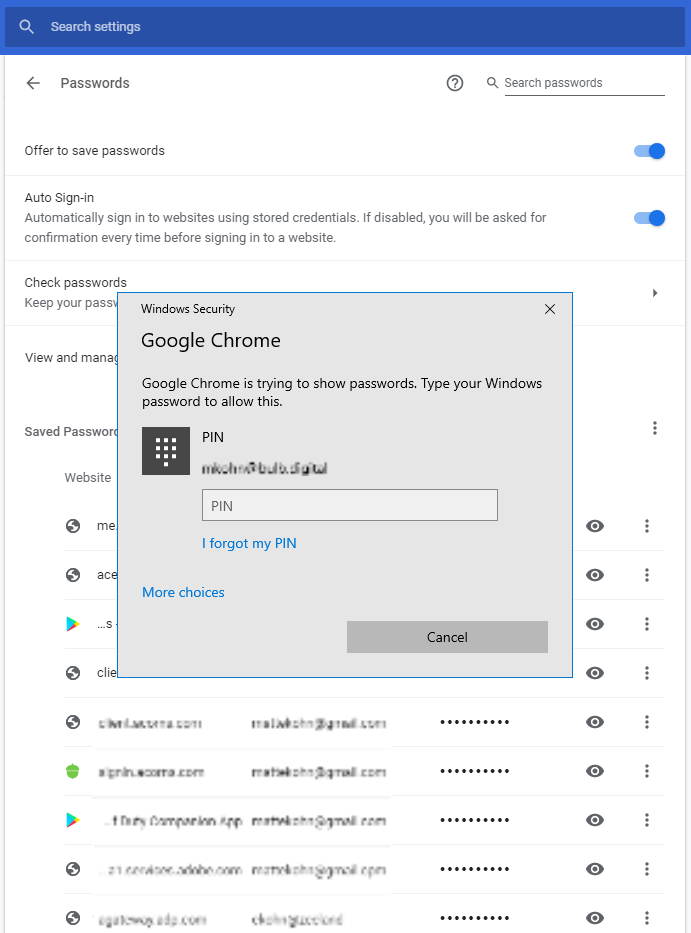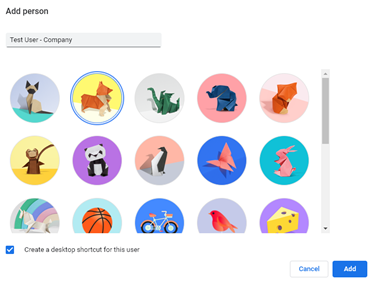Creating Browser Profiles for Easy Multi-Tenant O365 Logins
A lot of employees must engage in multiple levels of security to authenticate into their work environments. It can seem tedious, but the validation process is a necessary requirement to ensure the right users have the right access. In this piece, we'll talk about how to configure browser profiles that maintain your credentials that securely expedite your login process.
Requirements for Authentication
Before diving into browser profiles, we should talk about security. As you may already know, Microsoft Office 365 accounts require a username, password, and multifactor authentication (MFA) if required by your business. In this article, we will assume you need to have MFA verification enabled because it is another proficient level of security against potential breaches.
Multifactor authentication sounds big and complicated, but it simply means that users need to provide two or more pieces of evidence to get into their account. Entering your username and providing the correct password is the first piece of evidence, and the second piece can come in a variety of ways. So just think of MFA as having an additional password requirement that a hacker would also need to guess correctly to get in. This secondary password can take the form of security keys, electronic tokens, and most commonly as verification codes.
Password Management
It may be surprising to hear that phone numbers were originally defined to be seven digits because that’s the capacity of sequential numbers that our brains can commit to long term memory. Unsurprisingly, the digital age has pushed our obligation to create more complex passwords for each of our many accounts. It is no surprise that many of us can relate to the struggles of creating increasingly complicated passwords or keeping them consistent across platforms when we’re specifically advised not to.
Luckily if you use the chrome browser, you have the advantage of storing and managing all your passwords right within your Google account. The Google password manager is activated by default when you’re signed in and will remember passwords for you on the fly as you enter them while surfing the internet. It’s intuitive enough to prompt you on a sign-in page to ask whether you want to add your recently provided credentials to the password manager, so you have the option to opt-out of a specific account if needed. It can even suggest complex passwords at random if you happen to be signing up for something new and don’t know what to put in.
When you revisit a site that already has account information stored, the password manager will autofill the credentials for you with the Smart Lock feature. If more than one account has been used on a site, the manager will display the options to pick which one in the autofill. This is a super useful timesaver for me considering how many different Office 365 accounts I manage across several clients. Getting a password wrong can only take up a moment of the day, but if you struggle to keep passwords straight between multiple profiles then it can have a major impact on your logon time.
Perhaps the best feature is how google notices if a newly updated password is entered into an account stored by the manager. Google will take notice and prompt the user to confirm overwriting the old password with the newly entered one. This helps me seamlessly update managed passwords on the day they expire right when logging in to those online services.
If you already know you need to update an account or want to verify a current password stored in the manager, you can jump right into the password settings to view the configuration on all of the credentials saved for each service within your google account. This is extremely useful when you want to get an overview of how many applications you maintain from one account. There can be a lot more than you think!

Password management can be a highly effective desktop tool from both a time and stress saving perspective. When you spend less time guessing passwords for your accounts and have the confidence to access them immediately, you’re also more likely to opt into more platforms and expand your online presence. If you’re limiting access to your devices, then google password manager can be considered a safe and viable form of credential storage and security.
Creating Profiles
Once you’re set up with a Google password manager (or a similar platform) you can break out these accounts across multiple browser profiles or use the same one for each browser experience. Separate browser profiles can be used to separate bookmarks or search histories, especially when more than one user shares a device. In this case, it’s important to me to manage multiple profiles for myself on one machine.
For example, additional user profiles can be created in chrome which enables you to jump into different user experiences. Your profile is indicated on the top right of the chrome browser window as a circular avatar thumbnail. Selecting this icon brings up any created profiles and the button to add more. You can also select the ellipse icon button to the right of the profile thumbnail and select `Settings` to get to the same menu:

Adding profiles is simple and you don’t even need to link them with a google account necessarily to benefit from the password manager. Just remember that any credentials saved to the manager in that profile will be accessible to those that pick the profile to browse with.
To add a new profile, click `Add Person` and create a new name with an additional avatar image. I prefer to hyphenate my profile with the client/company/service account that I intend to use in that browser profile to help tell them apart and jump into each “ecosystem” individually.


After creating the new chrome profile, Google opens a new window and helps walk you through the further setup. Adding bookmarks, a background theme, and syncing with your Google account are standard best practices that help customize each profile for future use. Sometimes I can forget which profile I’m using and need to take a glance up at the top-right to recall which project I’m working on. If you don’t know whether you should be using a specific profile, you can always pick incognito mode to start a fresh online experience.
Once you’re signed into Google accounts within chrome profiles, all of your bookmarks, history, passwords, and other settings are automatically loaded so your experience is the same every time. The more you utilize the profile and customization options for your browser profiles, the easier they will be to tell apart. I can’t count how much time this manager has saved me from recalling forgotten passwords or simply how the browsers look and feel indicates to me if I’m on the right profile for the specific work that I need to do that day. Whether you only need one unique browser profile or multiple, consider digging into these features to enhance your digital experience!
Key Notes
- Security is always the first and foremost priority for most businesses. To that end, you should never create or link profiles or save passwords on a public machine that others may also have access to.
- Google's password manager will remember every password for you if you let it, but it’s still good to manually review those passwords and refresh yourself consistently. It’s still better than scribbling credentials on sticky notes and leaving them around the office.
- Once you’ve added all your credentials to the password manager, you can turn off prompts for newly entered passwords in the future in the manager settings.
- Anyone using chrome on your machine can switch to any other profiles that have been signed-in, so only share devices with those you trust.

SELF ASSESSMENT
Is your business getting full value from your M365 subscription?
Billions of dollars are wasted each year on underused subscriptions. Take 3 minutes to find out where your tools are driving results, and where they’re holding you back.
Find Out Now

Is Team Communication Holding You Back?
Find Out in Just 2 Minutes.
Take our quick scorecard to uncover communication gaps and hidden barriers within your team.






.jpg)







